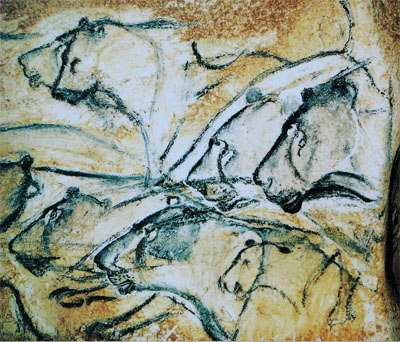Introduction:
The Lascaux Cave paintings, located in southwestern France, have captivated archaeologists, historians, and art enthusiasts alike for their sheer beauty and historical significance. Discovered in 1940 by a group of curious teenagers, these ancient masterpieces offer a glimpse into the artistic prowess of our prehistoric ancestors. These remarkable paintings, estimated to be over 17,000 years old, provide valuable insights into the lives, beliefs, and creativity of early human societies.
The Discovery:
The story of the Lascaux Cave paintings begins in 1940 when Marcel Ravidat, along with his friends, stumbled upon a hidden entrance to the cave while exploring the hills of Montignac. Little did they know that their discovery would lead to one of the most remarkable archaeological finds in history. The cave, containing a treasure trove of Paleolithic art, was soon recognized as a site of immense importance.
The Paintings:
Stepping into the dark recesses of Lascaux Cave is akin to entering a time machine, transporting us thousands of years back to the Upper Paleolithic era. The cave complex comprises several chambers adorned with breathtaking paintings and engravings that cover the walls and ceilings.
The Great Hall of the Bulls: This vast chamber is the crown jewel of Lascaux, boasting an extraordinary display of animals, including bulls, horses, stags, and bison. The stunning life-sized representations showcase a sophisticated understanding of anatomy and movement. These majestic creatures are depicted with remarkable attention to detail, demonstrating the early artist’s keen observation skills.
The Shaft Scene: Located adjacent to the Great Hall of the Bulls, the Shaft Scene is an intriguing depiction of a wounded bison. It is believed that this painting is one of the oldest artworks in the cave, symbolizing the successful outcome of a prehistoric hunting expedition. The flowing lines and color combinations in this piece demonstrate the artists’ advanced techniques, creating an immersive narrative for viewers.
The Painted Gallery: As one ventures further into the cave, they encounter the Painted Gallery, adorned with vivid geometric designs and abstract symbols. Some believe that these patterns may represent a form of early communication or serve a ritualistic purpose. Their exact meaning remains a subject of debate, allowing for various interpretations and speculations.
The Chamber of Felines: This chamber features an array of feline figures, predominantly lions and panthers, symbolizing strength and power. The artists’ ability to convey motion and emotions through these striking representations adds to the mystery and allure of the artwork.
The Bird Panel: As the name suggests, this panel showcases a variety of bird species, emphasizing the significance of avian life in the prehistoric environment. The artists’ delicate use of color and intricate detailing highlights their reverence for the natural world.
The Enigma of the Artists:
Despite extensive research and analysis, the identity of the artists behind the Lascaux Cave paintings remains a profound mystery. Speculations point to the likelihood of multiple contributors, as the artistic styles and techniques vary throughout the cave complex. It is believed that these artists were members of the Paleolithic society, which likely consisted of skilled hunters and gatherers with a rich cultural and spiritual life.
Significance and Interpretations:
The Lascaux Cave paintings hold immense cultural and historical significance. They provide a unique glimpse into the symbolic world of our prehistoric ancestors, shedding light on their beliefs, customs, and interactions with the natural environment. Some theories propose that these paintings served ritualistic or shamanistic purposes, acting as a medium for early humans to communicate with their spiritual realm or to ensure successful hunts.
Preservation and Challenges:
As time passed, the Lascaux Cave paintings faced the threats of deterioration due to human presence, environmental factors, and microbial growth. To safeguard this invaluable heritage, the cave was closed to the public in 1963, and an exact replica known as “Lascaux II” was created nearby for visitors to experience the awe-inspiring artwork without endangering the originals.
Conclusion:
The Lascaux Cave paintings stand as a testament to the timeless human instinct for creativity and expression. These ancient masterpieces bridge the gap between our modern world and the distant past, allowing us to connect with our prehistoric ancestors on a profound level. As technology and scientific advancements continue to unfold, researchers and art lovers alike will undoubtedly uncover more secrets and meanings hidden within the brushstrokes of these extraordinary cave paintings, forever preserving their legacy and enchanting the generations to come.
Hits: 41

